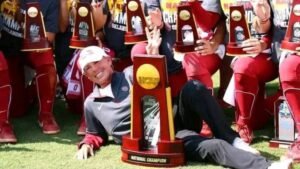
Despite the ever-shifting landscape of tariffs, international trade, and environmental regulations in the United States, Cupra, a relatively obscure Spanish automotive brand with a focus on electric vehicles, is actively preparing to launch its vehicles in the American market.

Headquartered in Barcelona, Cupra has reportedly engaged in discussions with the Penske Automotive Group, the third-largest dealer network in the U.S., which operates approximately 200 outlets nationwide. Penske’s familiarity with the brand, as it also runs Cupra dealerships across Australia, Germany, Italy, New Zealand, and the United Kingdom, could prove advantageous for the Spanish automaker’s entry into the competitive U.S. market.
In a statement issued to the Free Press, Cupra conveyed its ambitious intentions, stating, “Cupra aims to inspire the United States from its hometown of Barcelona, bringing its design led and performance driven cars to American roads.”
While entering the U.S. market presents significant hurdles, Cupra has already established a notable presence in the crowded European automotive landscape since its inception in 2018 as a sporty sub-brand of Volkswagen’s Seat. Seat, traditionally known for its practical and affordable vehicles, conceived Cupra to cater to a more performance-oriented segment. The resulting success of Cupra has reportedly impressed Volkswagen executives in Germany to such an extent that there is speculation about Seat potentially being phased out and replaced by the more stylish, profitable, and technologically advanced Cupra brand.
Currently, Cupra offers a diverse range of vehicles, including electric, hybrid, and gasoline-powered models, across more than 40 countries, including Mexico. In Mexico, the gasoline-powered Leon compact SUV has a starting price just under $37,000. Cupra’s strategy for the U.S. market hinges on emphasizing performance – a nod to its origins as the name of Seat’s racing division – and a distinctive style deeply rooted in Barcelona’s rich history as a hub of art, architecture, and design, hoping these elements will differentiate it from competitors.
However, penetrating the U.S. market will not be without its challenges. Stephanie Brinley, principal automotive analyst at S&P Global, noted, “Cupra has a respectable following, but the challenges of the U.S. market are very difficult to overcome.” She highlighted the sheer size and population of the United States, making it a costly endeavor to establish a new brand, both in terms of geographical reach and building brand awareness among consumers. To date, Cupra has sold over 800,000 vehicles globally.
Cupra’s initial focus in the U.S. will be on sporty and upscale electric vehicles (EVs) and hybrids. However, to generate initial sales volume and establish a service network, the brand may also offer some internal combustion engine (ICE) models.
In its statement, Cupra positioned itself as a novel entrant within the Volkswagen Group, stating, “As the first new brand created within the Volkswagen Group, we offer an alternative to the next generation of U.S. car buyers. Positioned between the mass and premium segments, we are not based on legacy or tradition. We are an unconventional challenger brand.”
The brand’s initial rollout in the U.S. is planned to concentrate on 20 states that are “strategically aligned with the Cupra brand.” This likely refers to states with more favorable policies and incentives for EV adoption, including emissions limits and purchase incentives.
Adam Bernard, principal of consultant AutoPerspectives, emphasized the brand’s lack of recognition in the U.S., stating, “Cupra is totally unknown to the U.S. population. It’s a blank slate. The brand doesn’t overlap with VW or Audi. Does VW want to spend a pile of money to establish an image for it?”
Cupra executives reportedly toured the Los Angeles auto show in November of the previous year to assess the competitive landscape. While initial projections suggested a U.S. launch in 2027, the official target is now set for the end of the current decade.
The model lineup for the U.S. market is expected to be comprehensive, including gasoline-powered vehicles, hybrids, plug-in hybrids, battery-electric vehicles, and extended-range EVs featuring onboard gasoline-powered generators.
Cupra intends to manufacture its vehicles for the North American market within existing Volkswagen Group facilities in the region. Potential assembly plant locations include Chattanooga, Tennessee; Puebla, Mexico; and the upcoming Scout Motors plant in South Carolina.
The company acknowledges the fluid nature of U.S. tariff policy but asserts that it will not deter its entry into the market. “Cupra is monitoring developments closely and will comprehensively address the potential impact on supply chains and our production network,” the statement affirmed.
The crucial question of how Cupra vehicles will be sold in the U.S. remains. Volkswagen previously angered its American dealer network with plans to sell the rugged Scout SUVs and pickups directly to consumers. While Cupra has not yet announced its specific sales strategy, its discussions with Penske Automotive Group are seen by industry experts as a potential indication of its approach. Brian Gordon, president of the Dave Cantin Group, which advises dealerships, suggested that the overture to Penske is “obviously an attempt to shortcut” the process of building a sales network from the ground up. He added, “A partnership with a large dealer network would be a strategic beachhead” for the new brand.





